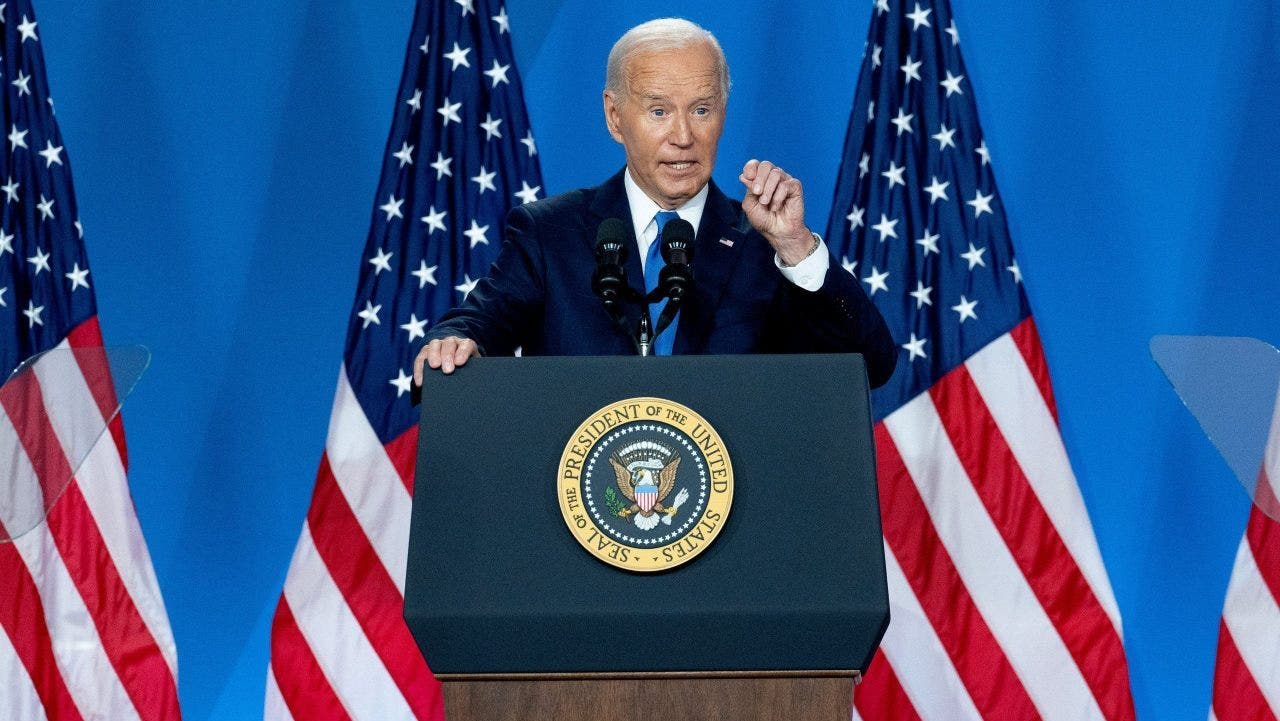North Dakota
Mike Jacobs Always in Season: Early June grebe run falls short of anticipated species count

Contributed/Tom Stromme
We made the grebe run on the first day of June – Thursday last week. We are Erik Fritzell, biologist and birder, and myself, bird columnist.
Lamentably, our run took us farther and found fewer species than we – or at least I – anticipated, even expected.
The species total was four out of six species that occur in North Dakota. We might have seen a fifth, but neither of us was confident of our initial identification. More on that later.
As a baseline: the six North Dakota grebes are pied-billed, eared, horned, red-necked, western and Clark’s.
The red-necked grebe set off this caper. Postings on local group websites and on ebird, maintained by Cornell University’s Laboratory of Ornithology, suggested a surge in the number of red-necked grebes. I wanted to check this out, and I invited Fritzell to join me.
I was prepared to go all the way to the Turtle Mountains, the historic range of the species in the state, but we encountered red-necked grebes in Nelson County less than 50 miles and 60 minutes west of Grand Forks.
This was not our first species. The first grebe species we found was pied-billed grebe, an outcome that we fully expected. Pied-billed is the “ditch grebe” that I described in a column about northern shovelers, the “ditch duck.” These species share the same kind of habitat, though only ditches, of course, and they are fairly often found together.
The red-necked grebe showed up quickly. We made a stop on a graded but unsurfaced road across an extensive wetland area. I was hardly out of the car before I heard the distinctive call of the red-necked grebe, a noise, rather, that I have relished on camping trips in the Turtle Mountains.
Sure enough, it was a red-necked grebe – and the bird was not alone. That wetland had half a dozen pairs, at least. That’s the count. Surely there were more, because the wetland is extensive.
The area provided everything that red-bill grebes want: thick standing vegetation ringing a patch of open water. The standing vegetation, often cattails, provides nesting structure and protection from intrusion. The open water provides good hunting. Like most other grebes, the red-necked grebe is a hunter, taking lake life under water. The exception is the pied-billed grebe, which is often a “sinker” disappearing quietly and without fanfare.
We saw red-necked grebes on other potholes that we passed, enough to convince me that the species has pushed out of its usual range and onto the open prairie. Almost certainly, that’s a response to permanent water in wetlands that sometimes go dry.
In that same wetland complex, we found eared grebes and in a larger expanse of open water, we found western grebes. By 8 a.m., we had four species.
The eared grebe is an odd-looking creature with a smallish body and a long neck. Even more remarkable are the “ears,” which are really tufts of feathers.
“The Birds of North America” tells me that eared grebes are “by far the most abundant member of its family in North America and, indeed, in the world.”
That turned out to be the day’s total – though not from lack of trying. We headed west in search of Clark’s grebes, a near twin of the western grebe, and horned grebes. I had expected to find horned grebes in much the same habitat and in the same area as the other species. That’s the situation in the Coteau country of northwestern North Dakota, where I grew up and first met the grebes.
It turns out I was projecting my newbie birder experience of six decades ago onto a different landscape. The horned grebe’s range is farther west. Realizing this – from Fritzell’s life experience, which hadn’t included teenage horned grebe sightings since he grew up in Grand Forks – I boldly made the decision to head west to Lonetree Wildlife Management area, where I had seen the horned grebe.
No luck though.
And no luck with Clark’s grebe, either. I had found this species at Lonetree, where I once owned a “birding shack.” Coal Mine Lake had plenty of western grebes, and we looked them over closely. I found one that I thought might be a Clark’s grebe, but I wasn’t completely convinced, and neither was Fritzell, and so we didn’t count it.
This was no failure, however. The species are almost indistinguishable; the clinching field mark is the placement of the eye, within or below the black cap. It takes good binoculars and steady hands to make that determination.
It was a great day afield – too many miles and too much gasoline consumed – but satisfying nonetheless. I’m going to dream up more such outings. Stay tuned.
The grebes have had their run, however. No more grebes as bird of the week – unless. …
Jacobs is a retired publisher and editor of the Herald. Reach him at mjacobs@polarcomm.com.

North Dakota
Color of Hockey: Rangers prospect Emery 'comfortable' heading to North Dakota | NHL.com

Murphy played quarterback for North Dakota from 1960-62 and was its coach from 1978-79. He left a lasting impression on Eric Emery, especially after Cal Fullerton went 12-0 in 1984. Murphy died Oct. 29, 2011.
“I guess I kind of transported into EJ, the sense of respect I have for Gene Murphy and what he did for us at Cal Fullerton,” said the elder Emery, who went on to become a linebacker for the BC Lions, Calgary Stampeders and Ottawa Rough Riders of the Canadian Football League from 1985-87.
“He brought us together and he actually told us that we were going to be champions because he saw the capability in us. I just had to have him (EJ) go look at North Dakota because Gene came from there and a lot of his coaches that he brought with him came from there and they were such good guys. So I figured North Dakota must have something going on.”
There’s also a North Dakota connection between the younger Emery and NTDP coach Nick Fohr, who was born and raised in Grand Forks and regularly attended UND games with his father Roger, who was an off-ice official right up until when he died of cancer in January 2023.
“Oh yeah, we talked about it, for sure,” Fohr said. “Pretty cool place for me and it’s pretty cool to have somebody like EJ interested in that place.
“When people think of an EJ Emery, a Black kid that that’s looking to play hockey, rarely are they going to place him in North Dakota, right? We had some really good conversations about the city, the town and what it’s like. From talking to EJ and his family, they (UND) did a really, really, really good job in the recruiting process in making him feel comfortable, letting him see what it’s like and meeting some football players and other people. It just felt like home to him is how I took it.”
North Dakota hockey coach Brad Berry said Emery had been on the team’s radar since he played for Yale Hockey Academy in Abbotsford, British Columbia, in 2021-22.
“When we got to the recruiting process, he got to know us, we got to know him and it felt comfortable,” Berry said. “When we recruit players, we have a criteria of what we want in a player: It doesn’t matter where you come from or who you are. It matters what you are as a person, and he checked every box that we had.”
Emery (6-foot-3, 183 pounds) is UND’s first Black player since Akil Adams, a defenseman who appeared in 18 games from 1992-94.
North Dakota has had diverse rosters since. Washington Capitals forward T.J. Oshie, a United States-born player who is Indigenous, played there from 2005-08. Center Jordan Kawaguchi, a Canada-born player of Japanese ancestry, played for UND from 2017-21 and was team captain in his final season.
Emery’s selection by the Rangers and commitment to North Dakota delighted Adams, who played in the minor leagues and Germany after he left the university.
“I’m still a North Dakota guy through and through,” said Adams, who lives in Detroit. “He’s definitely in the right place and I’m happy to see that there’s actually somebody else there. I just think it probably speaks volumes about the kind of player he is.”
North Dakota
Huskers add top recruit in North Dakota to 2025 class

LINCOLN, Neb. (KLKN) – Matt Rhule and the Nebraska football staff got commitment No. 17 in the 2025 class on Sunday, adding four-star defensive lineman Kade Pietrzak.
The highly sought-after recruit from West Fargo, North Dakota, is the No. 1 recruit in his state and chose Nebraska over Oklahoma, Kansas State and Wisconsin.
Pietrzak checks in at 6-foot-5, 240 pounds and has been on Rhule’s radar since he was hired at Nebraska.
He will join two other defensive linemen in the class of 2025: Omaha North’s Tyson Terry and Malcolm Simpson from Texas.
Pietrzak is the second-highest rated recruit for Nebraska in this year’s class so far behind Simpson.
COMMITED‼️@HuskerFootball @CoachMattRhule @Coach_Knighton @HuskerCoachTW
#GBR pic.twitter.com/SAXF1FOQ2J— Kade Pietrzak (@KadePietrzak) July 21, 2024
North Dakota
North Dakota Superintendent Helping Schools Develop AI Guidelines

North Dakota School Superintendent Kirsten Baesler announced new state guidance on artificial intelligence (AI) designed to assist local schools in developing their own AI policies and to help teachers and administrators work more efficiently.
A group of educators from North Dakota schools, the NDDPI, the Department of Career and Technical Education, and state information technology agencies created this guidance, which is available on the Department of Public Instruction’s website.
Baesler emphasized that implementing AI, like any instructional tool, requires careful planning and alignment with educational priorities, goals, and values.
She stressed that humans should always control AI usage and review its output for errors, following a Human-Technology-Human process. “We must emphasize keeping the main thing the main thing, and that is to prepare our young learners for their next challenges and goals,” Baesler said.
Steve Snow and Kelsie Seiler from the NDDPI Office of School Approval and Opportunity highlighted that the guidance was drawn from various state education agencies and technology websites, such as Code.org and TeachAI.org, with the process taking about eight months.
“We had a team that looked at guidance from other states, and we pulled pieces from different places and actually built guidance tailored for North Dakota students,” Snow said.
Seiler explained that AI excels at data analysis, predictive analytics, and automating repetitive tasks but lacks emotional intelligence, interdisciplinary research, and problem-solving abilities.
Snow added that AI can help teachers design lesson plans aligned with North Dakota’s academic content standards quickly and adjust them for students who need more support. AI can also simplify the development of personalized learning plans for students.
“You have so many resources (teachers) can use that are going to make your life so much easier,” Snow said. “I want the teachers, administration, and staff to get comfortable with using (AI), so they’re a little more comfortable when they talk to kids about it.”
Seiler noted that the NDDPI guidance is not a “how-to” manual for using AI but offers general suggestions on developing local policies to leverage AI effectively.
“Our guidance is meant to provide some tools to the school administration and say, ‘Here are some things to think about when you implement your own AI guidance,’” Snow said.
“For instance, do you have the infrastructure to support (AI)? Do you have a professional development plan so your teachers can understand it? Do you have governance in place that says what AI can and can’t be used for?”
8 Everyday Foods That Are Legal in Montana, Forbidden Elsewhere
These foods are easy to find on store shelves wherever you buy your groceries in Montana. However in other states they’re banned from the shelves!
Gallery Credit: Michelle Heart
Big List Of The Best French Fries In Montana
Gallery Credit: mwolfe
-

 Politics1 week ago
Politics1 week agoTwo key states to see massive GOP voter registration operation
-

 World1 week ago
World1 week agoJapan, Germany agree to boost security cooperation in Pacific
-

 News1 week ago
News1 week agoWhy the next president's judicial appointments will impact climate action
-

 Politics1 week ago
Politics1 week agoYearslong tensions boil over as ex-Obama staffers gang up on Biden: 'Clooney was exactly right'
-

 News5 days ago
News5 days agoIn Milwaukee, Black Voters Struggle to Find a Home With Either Party
-

 World1 week ago
World1 week agoUkraine: shelling in Kherson leaves at least two people dead
-

 News1 week ago
News1 week agoVideo: Biden Asks America to ‘Lower the Temperature’
-

 Politics1 week ago
Politics1 week agoRep. James Clyburn claims Biden is slowing physically but 'mentally' fit and 'one of the best minds' he's met

/cdn.vox-cdn.com/uploads/chorus_asset/file/25336396/STK466_ELECTION_2024_CVirginia_H.jpg)












